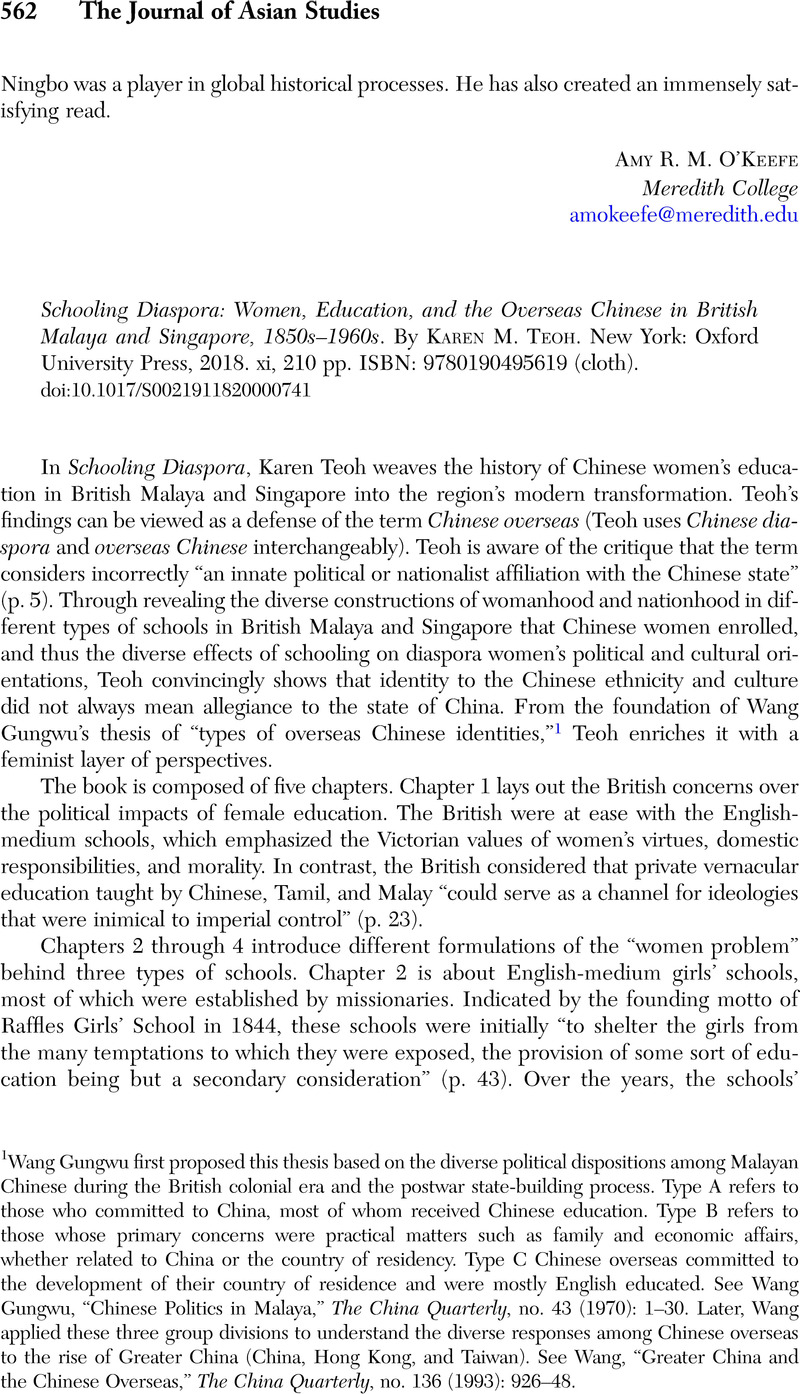No CrossRef data available.
Article contents
Schooling Diaspora: Women, Education, and the Overseas Chinese in British Malaya and Singapore, 1850s–1960s. By Karen M. Teoh. New York: Oxford University Press, 2018. xi, 210 pp. ISBN: 9780190495619 (cloth).
Review products
Published online by Cambridge University Press: 16 June 2020
Abstract

- Type
- Book Reviews—Transnational and Comparative
- Information
- Copyright
- Copyright © The Association for Asian Studies, Inc. 2020
References
1 Wang Gungwu first proposed this thesis based on the diverse political dispositions among Malayan Chinese during the British colonial era and the postwar state-building process. Type A refers to those who committed to China, most of whom received Chinese education. Type B refers to those whose primary concerns were practical matters such as family and economic affairs, whether related to China or the country of residency. Type C Chinese overseas committed to the development of their country of residence and were mostly English educated. See Gungwu, Wang, “Chinese Politics in Malaya,” The China Quarterly, no. 43 (1970): 1–30CrossRefGoogle Scholar. Later, Wang applied these three group divisions to understand the diverse responses among Chinese overseas to the rise of Greater China (China, Hong Kong, and Taiwan). See Wang, , “Greater China and the Chinese Overseas,” The China Quarterly, no. 136 (1993): 926–48Google Scholar.


